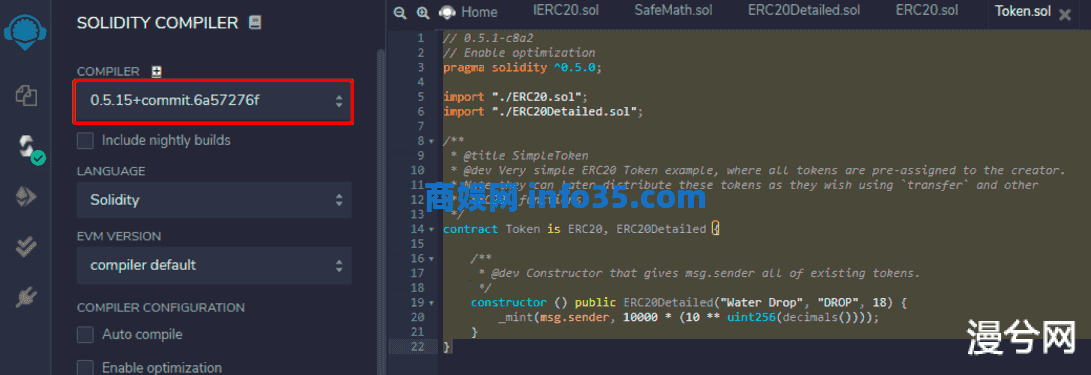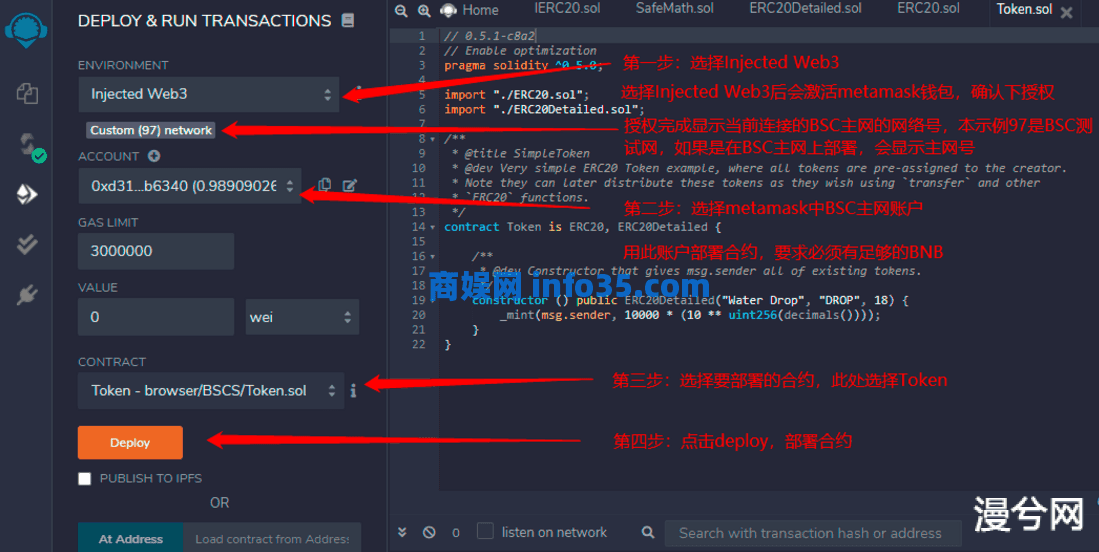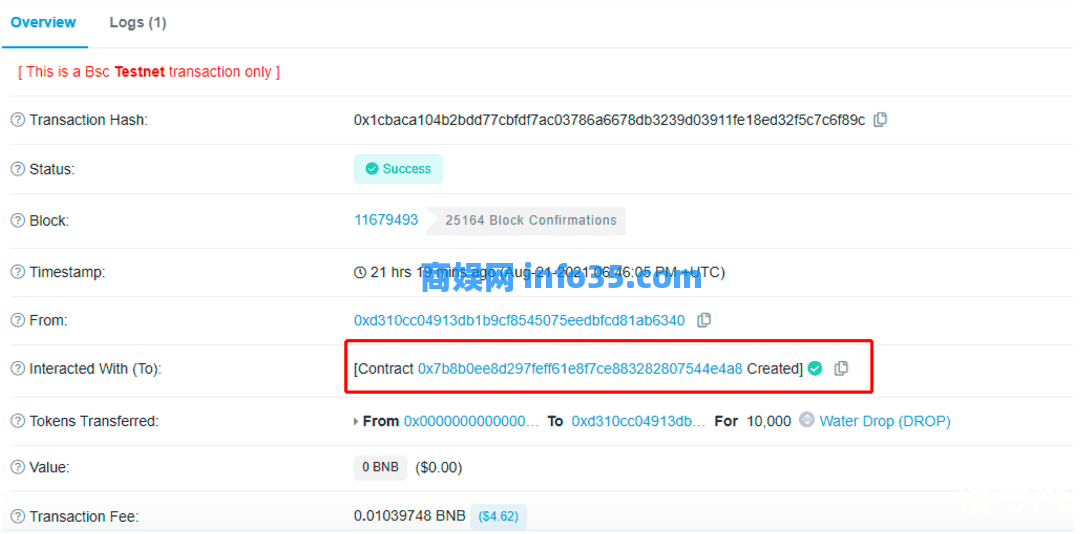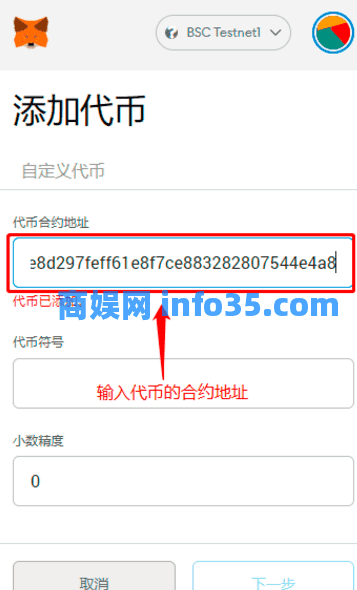币安BSC智能链发币教程 remix+metamask实现币安BSC链上发币
一、准备:
1、使用在线的remix IDE或者搭建本地remixIDE都可以,优先选择在线的ide,中小项目足够了,但是在线remix的编译器版本加载有些慢,必要时需要KXSW
2、metamask钱包配置连接BSC主网,钱包中要有BNB,发币时消耗的BNB,这点区别于波场发币,波场消耗的是带宽和能量
metamask要充值足够的BNB否则合约发行失败,还会消耗掉你的BNB
3、合约接口要实现ERC20标准
4、部署合约时,要选择inject web3,连接上metamask钱包的用户来部署合约。
二、注意事项
1、发币完成后要记录交易的hash id,通过bscscan浏览器查询合约是否部署成功,并且获得发布的token的合约地址
2、bsc上发布合约后,暂时没有渠道可以上传通证logo,这点不如波场,在波场上可以自由上传更新logo
3、发币时建议首先在bsc的测试网上发布下合约,在钱包中转账,测试下是否满足合约中设定的模式。没有问题后再在bsc主网上发币。
三、具体发币步骤
1、打开remix在线IDE或者本地IDE环境
官网remix网址:https://remix.ethereum.org/,本示例使用的是本地remixIDE环境
2、创建合约文件
如果有多个文件,项目比较复杂的话,可以在根目录下创建文件夹,每发行一个代币保存到一个文件夹中,这样便于管理。
本示例以标准代币发行为例演示发币过程
在BSCS文件夹下创建五个sol文件:分别为IERC20.sol,SafeMath.sol,ERC20Detailed..sol,ERC20.sol,Tokenl.sol
对应的文件代码如下:
IERC20.sol文件:
SafeMath.sol文件:
ERC20Detailed.sol 文件:
ERC20.sol 文件:
Token.sol 文件:
修改token.sol文件的合约全称,简称,发行数量。本示例发行代币全称为Water Drop,简称为 DROP,发行总量为 10000
以上文件创建完成后保存会自动编译。
编译器版本选择0.5.15
3、部署合约
所有合约文件编译通过后,就可以部署合约了。
remix IDE支持以太坊,BSC,HECO链上部署合约,代码在所有链上完全一致,不需要任何针对平台的调整。
决定合约部署到哪个公链上,取决于metamask钱包当前连接到哪个公链上。
比如本示例想部署到BSC公链上,此时metamask就必须连接BSC主网:
4、合约部署完成后,在BSC区块链浏览器上查询hash id,确认合约是否部署成功。
点击deploy执行合约部署后,在remix控制台输出如下:
其中最重要的信息是 transaction hash值,记录该值,到区块链浏览器上查询该值。
文章版权归原作者所有或来自互联网,未经允许请勿转载。如有侵权请联系我删除,谢谢!
THE END
二维码
打赏








共有 0 条评论